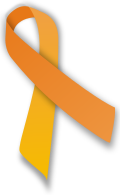| Revision as of 03:39, 21 March 2011 editMrChupon (talk | contribs)Extended confirmed users, Rollbackers4,000 editsm Reverted edits by 203.12.147.98 (talk) to last revision by 164.97.245.84 (HG)← Previous edit | Revision as of 08:21, 21 March 2011 edit undo60.242.61.233 (talk) →Diversity and Social Cohesion ProgramNext edit → | ||
| Line 19: | Line 19: | ||
| *''Harmony Day'' celebrations began in 1999 and originally involved mainly ] aged children and community groups. Over the years, the event has been expanded to involve the wider community. Harmony Day’s continuing success is due to the ongoing support it receives from the wider community such as schools, community organisations, local councils and business. <ref>http://www.harmony.gov.au/harmony-day/</ref> | *''Harmony Day'' celebrations began in 1999 and originally involved mainly ] aged children and community groups. Over the years, the event has been expanded to involve the wider community. Harmony Day’s continuing success is due to the ongoing support it receives from the wider community such as schools, community organisations, local councils and business. <ref>http://www.harmony.gov.au/harmony-day/</ref> | ||
| and bitc | |||
| ==Harmony Day Themes== | ==Harmony Day Themes== | ||
Revision as of 08:21, 21 March 2011
Harmony Day is held on 21 March. Managed by the Department of Immigration and Citizenship (DIAC), Harmony Day celebrates the cohesive and inclusive nature of Australia and promotes a tolerant and culturally diverse society.
Harmony Day began in 1999, coinciding with the United Nations International Day for the Elimination of Racial Discrimination and each year, it is an opportunity for everyone to come together and participate in local activities.
Over the years, Harmony Day has grown in popularity as Australians have made the day their own. Communities themselves decide how they would like to come together to mark the occasion – some have morning teas, others organise a fair and some celebrate by dressing in national costumes.
Since 1999, a wide variety of groups including sports organisations, community groups, local government, churches, schools and businesses have staged more than 25 000 Harmony Day events, with nearly 5000 events registered in 2010 alone.
History
In 1998, the Living in Harmony program was established and administered by the former Department of Immigration and Multicultural Affairs(DIMA) - now the Department of Immigration and Citizenship (DIAC).
The Australian Government's review of the Living in Harmony program was completed in 2009, becoming the Diversity and Social Cohesion Program. The Diversity and Social Cohesion Program provides funding, education and information to help organisations create a spirit of inclusiveness and helps ensure all Australians are treated fairly regardless of their cultural background or circumstance.

Diversity and Social Cohesion Program
The Diversity and Social Cohesion Program has two key elements: Community Grants and Harmony Day.
- Community Grants are designed to fund local projects that address cultural, racial and religious intolerance at a community level. Grants are available to incorporated, non-profit organisations.
- Harmony Day celebrations began in 1999 and originally involved mainly primary-school aged children and community groups. Over the years, the event has been expanded to involve the wider community. Harmony Day’s continuing success is due to the ongoing support it receives from the wider community such as schools, community organisations, local councils and business.
and bitc
Harmony Day Themes
The continuing message of Harmony Day is ‘Everyone Belongs’. It's about community participation, inclusiveness, respect and a sense of belonging for everyone - celebrating the cultures that make Australia a great place to live.